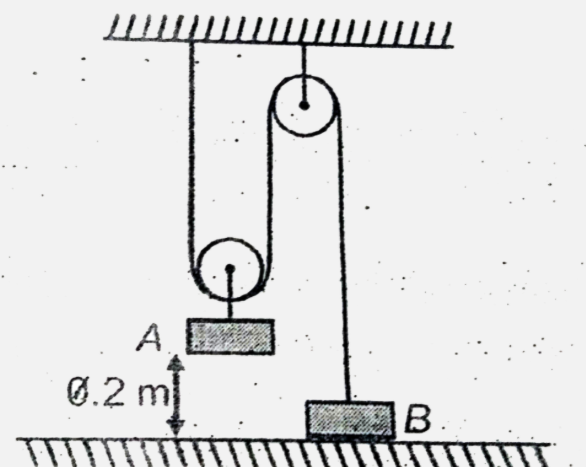At the maximum height of a body thrown vertically up
velocity is not zero but acceleration is zero
acceleration is not zero but velocity is zero
both acceleration and velocity are zero
both acceleration and velocity are not zero
The correct Answer is:B
To solve the question regarding the state of a body thrown vertically upwards at its maximum height, we need to analyze the concepts of velocity and acceleration.
1. Understanding the Motion: When a body is thrown vertically upwards, it moves against the force of gravity until it reaches its maximum height. At this point, the body momentarily stops before it starts falling back down.
2. Velocity at Maximum Height: At the maximum height, the upward velocity of the body becomes zero. This is because the body has reached the peak of its trajectory and is about to reverse direction.
3. Acceleration at Maximum Height: Even though the body is momentarily at rest at the maximum height, the acceleration due to gravity (denoted as g) is still acting on the body. This acceleration is always directed downwards, towards the center of the Earth.
4. Conclusion: Based on the analysis:
- The velocity of the body at maximum height is zero.
- The acceleration of the body at maximum height is not zero (it is equal to g, acting downwards).
5. Final Answer: Therefore, the correct option is: Acceleration is not zero, but velocity is zero.
- The velocity of the body at maximum height is zero.
- The acceleration of the body at maximum height is not zero (it is equal to g, acting downwards).
Topper's Solved these Questions
- MOTION IN A STRAIGHT LINE BOOK - AAKASH SERIESCHAPTER - MOTION IN A STRAIGHT LINE EXERCISE - EXERCISE -II
80 Videos
- MOTION IN A STRAIGHT LINE BOOK - AAKASH SERIESCHAPTER - MOTION IN A STRAIGHT LINE EXERCISE - PRACTICE EXERCISE
58 Videos
- MOTION IN A STRAIGHT LINE BOOK - AAKASH SERIESCHAPTER - MOTION IN A STRAIGHT LINE EXERCISE - very Short answer type question
15 Videos
- MOTION IN A PLANEBOOK - AAKASH SERIESCHAPTER - MOTION IN A PLANEEXERCISE - QUESTION FOR DESCRIPTIVE ANSWER
7 Videos
- MOVING CHARGES AND MAGNETISMBOOK - AAKASH SERIESCHAPTER - MOVING CHARGES AND MAGNETISMEXERCISE - EXERCISE-III
49 Videos
Similar Questions
Assertion : A body is dropped from height h and another body is thrown vertically upwards with a speed √gh. They meet at height h2.
Reason : The time taken by both the blocks in reaching the height h2 is same.
View SolutionA boy throws n balls per second at regular time intervals. When the first ball reaches the maximum height he throws the second one vertically up. The maximum height reached by each ball is
View Solution
Knowledge Check
A body, thrown upwards with some velocity, reaches the maximum height of 20 m. Another body with double the mass thrown up, with double intial velocity will each a maximum height of
A40 mB80 mC120 mD160 m
A boy throws n balls per second at regular time intervals.When the first ball reaches the maximum height he throws the second one vertically up .The maximum height reached by each ball is
View SolutionA body is thrown up with a speed u, at an angle of projection θ If the speed of the projectile becomes u√2 on reaching the maximum height , then the maximum vertical height attained by the projectile is
View SolutionA body is thrown vertically upward from a point A 125 m above the ground. It goes up to a maximum height of 250 m above the ground and passes through A on its downward journey. The velocity of the body when it is at a height of 70 m above the ground is (g=10m/s2)
View SolutionFrom the top of a tower body A is thrown up vertically with velocity u and another body B is thrown vertically down with the same velocity u.If VA and VB are their velocities when they reach the ground and tA and tB are their times of flight ,then
View SolutionA ball of mass m is thrown straight up. It goes to a maximum height and then returns. Finally it strikes ground. In the whole process.
View SolutionA projectile is thrown with velocity v at an angle θ with the horizontal. When the projectile is at a height equal to half of the maximum height,.
The vertical component of the velocity of projectile is.
View SolutionIn the arrangment shown in figure , the mass of the body A is 4 m and that of body B is m . The height h=0⋅2 m . If the body B is released , then till what maximum height the body B will go up ? (g = 10m/s2)

View Solution
